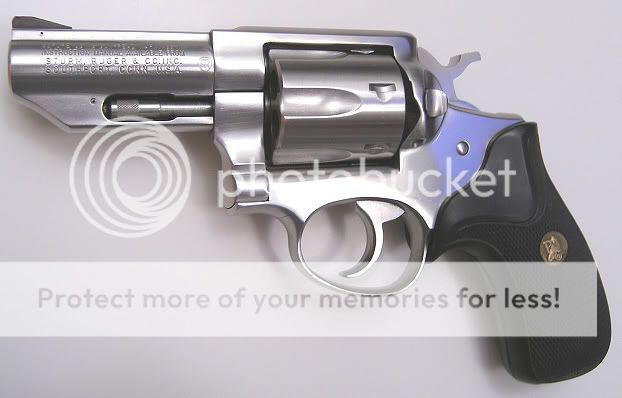Ttexastom
Member
Have a model 66 with recessed cylinder, does anyone know approximately when it was manufactured?
I must have gotten a few extrodinarily well built model 66s. My former duty gun, a 4 inch 66-2, which is going to the range again today, has over 11,000 rounds through it. In all the years I have carried/qualified/competed and shot it just for fun It has functioned perfectly and shot extremely accurately.
I must have gotten a few extrodinarily well built model 66s. My former duty gun, a 4 inch 66-2, which is going to the range again today, has over 11,000 rounds through it. In all the years I have carried/qualified/competed and shot it just for fun It has functioned perfectly and shot extremely accurately.
My gunsmith replaced one small part around 6 years ago. It does exhibit a bit of end shake and could probably benefit from a shim. Other than that, no problems.
An aquaintance at the local indoor range has a 4 inch 66-1. He is retired from the US Navy and has stated that his team carried and used model 66s in training and on missions. In training he stated that they fired so many rounds through their model 66s that the guns became too hot to touch and they would wear gloves to shoot them. Ammunition used was Winchester 145 grain silvertip. He has never mentioned a failure and was so fond of this revolver that he purchased his own.
I also have examples of the 66 no dash, 66-1, 66-3 and 66-4. All are well past 1500 rounds fired with no failures. In fact the only issue I have ever had was with the 66 no dash. While shooting at a class back in the early 80s it got very hot and extraction of spent casings became very difficult. Allowed to cool down during lunch, there were no problems finishing the class.
So I am very surprised to read of testing done by the federal government where not one example of a 66 went more than 1500 rounds without failure. Even more surprised when I recall that another federal agency, the Secret Service, authorized and used model 66s for decades. IIRC there are pics of Secret Service agents drawing their snub 66s during the assasination attempt on President Reagan.
It seems odd that they would approve a handgun prone to failure.
Was that an issue of design or of fitting? Desribe what you mean by "chafe". I picture a cylinder that won't/can't rotate, but guns I have had do that got fixed. I also learned to make sure my ejector was screwed in tight.The Wyoming Highway Patrol and others dropped them due to failures to fire. The SS Mdl. 66 would chafe and the guns would lock up. A Trooper was shot in the Red Desert by a bank robber. The Trooper's Mdl. 66 locked up and the bandit shot him.
I really doubt that the USBP stamp makes that gun worth $1,000 dollars? That is my thoughts and I am weak minded.
Realgun, The early SS revolvers and semi auto pistols tended to chafe. This caused the guns to lock up. Chafe is a verb meaning to wear or abrade from rubbing.Was that an issue of design or of fitting? Desribe what you mean by "chafe". I picture a cylinder that won't/can't rotate, but guns I have had do that got fixed. I also learned to make sure my ejector was screwed in tight.
I know what chafe means but not as applied to guns. I would be guessing. I thought maybe you would know and be willing to describe it, since you used the word.Realgun, The early SS revolvers and semi auto pistols tended to chafe. This caused the guns to lock up. Chafe is a verb meaning to wear or abrade from rubbing.
I'm not sure what the confusion is, but I'll try to clarifyI thought maybe you would know and be willing to describe it, since you used the word.
SynonymsChafe is a verb meaning to wear or abrade from rubbing
Galling is a form of wear caused by adhesion between sliding surfaces. When a material galls, some of it is pulled with the contacting surface.but not as applied to guns
<snip>
Certain stainless alloys used in early M-66 chafed against each other...exhibiting galling

I see references to Service Six and adjustable sights. I though that a Service Six was fixed sight by definition.
Jordan was the one who always wrote the opposing articles on using autos, opting (or so he said) for the more traditional revolver. That he would carry a S&W 59 is surprising given the poor reputation of the pistol. But when you're Bill Jordan you can always get someone to work on one until it works. I remember wanting one of the nickel plated models back then, but I went with the Italian Beretta 92 because they worked out of the box and was the most reliable auto on the market.Bill Jordan once told me that USBP had bought some Rugers, but didn't add that the M-66 had failed trials. I was amused to note that the gun he had that day was a S&W M-59 9mm auto! He said that his M-59 worked well. I should add that he was by then long retired from the Border Patrol.

